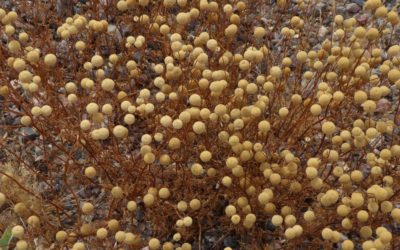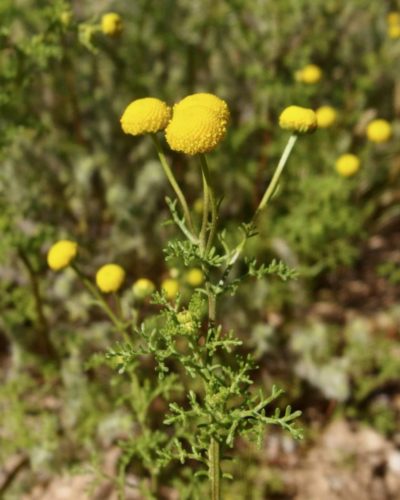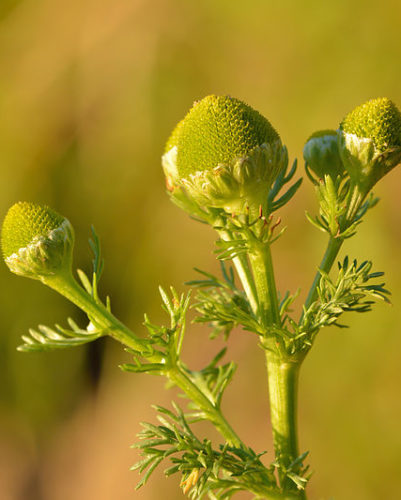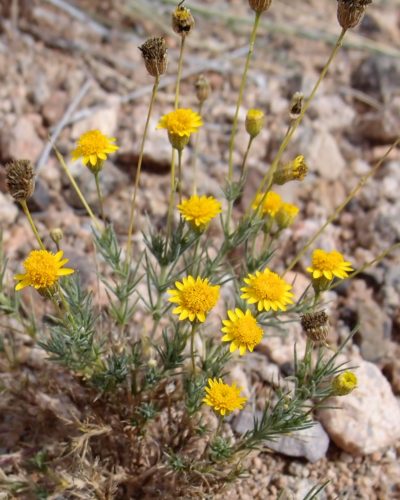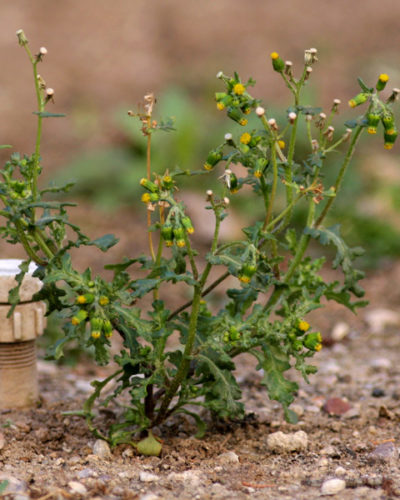PREVENT THE SPREAD OF STINKneT IN SOUTHERN ARIZONA!
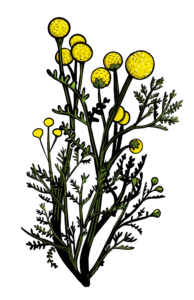 Stinknet is an invasive plant in Pima County that crowds out native plants and is highly flammable. It grows from a couple of inches to two feet between November and May, and upon flowering produces thousands of seeds. It will start flowering around February. Once it dries up, it becomes flammable. Stinknet can also cause headaches, and severe skin and respiratory reactions.
Stinknet is an invasive plant in Pima County that crowds out native plants and is highly flammable. It grows from a couple of inches to two feet between November and May, and upon flowering produces thousands of seeds. It will start flowering around February. Once it dries up, it becomes flammable. Stinknet can also cause headaches, and severe skin and respiratory reactions.
Help us track the spread and join the fight to remove stinknet in Tucson.
Reporting and removing early is essential! If possible, remove it after it emerges; DO NOT let it flower!
STINKNET ALERT!
Stinknet sightings are increasing in Pima County! We need your help Reporting or Removing Stinknet.
Now is the time to eliminate this pesky invasive before it spreads further in Pima County.
You can get involved by joining a stinknet pull! More information can be found at the Desert Museum website.
Report on the go! 
Large infestations crowd out native wildflowers!
Stinknet can grow in a wide variety of places, including backyards, desert riparian areas, sidewalks, and disturbed or undisturbed soil. Infestations spread rapidly, growing in dense clusters easily displacing native vegetation. Large infestations are extremely difficult to eliminate. Reporting and removing early is essential.
Photo credit: Zach Duncan
Dried plants become a fire hazard!
After the growing season, the plant dries, fueling fires and suppressing native wildflower blooms. It forms dense, highly flammable infestations that release an intensely acrid smoke when burned. During growth, the plants can cause severe allergic reactions, both dermal and respiratory.
HOW TO ID?
Stinknet, Oncosiphon pilulifer gets its name from the pungent smell it produces.

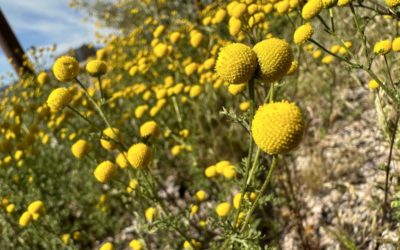
Spherical yellow to gold flowers without petals

Dark green carrot-like leaves with a pungent stinging odor

Flowers range in size from about .5 -1 cm (pencil eraser)
Dried plant has bronze leave with rusty tan flowers

Ranges from 2 inches to 2 feet tall
lOOKALIKES
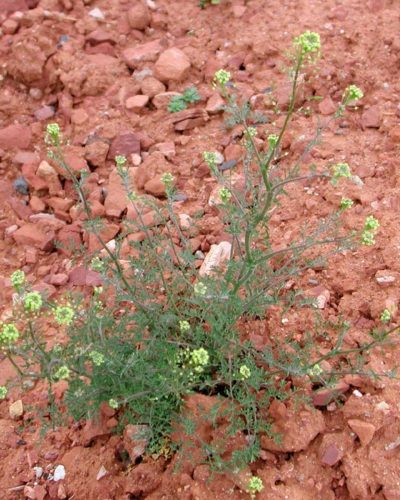 Photo credit: Max Licher
Photo credit: Max Licher
WESTERN TANSY-MUSTARD
- Long leaves covered in hairs
- Flowers range from yellow to white with petals
 Photo credit: Max Licher
Photo credit: Max Licher
AMERICAN WILD CARROT
- leaves and stems covered with small hairs
- White to cream flowers
Treatment
Pull or dig plants to remove stinknet. Discard flowering plants in an enclosed bag to prevent tiny seeds from spreading. Clean shoes, clothing, and equipment to prevent the spread. Stinknet can cause respiratory or skin allergic reactions. Be sure to use gloves and a facemask when hand pulling.
Be sure to use gloves and a facemask when hand pulling.
Hire a certified applicator to treat established infestations with herbicide
EARLY DETECTION, RAPID RESPONSE IN PIMA COUNTY
Stinknet has become widespread in Maricopa County and Pinal County. It’s very visible while driving along the I-10 between Phoenix and Tucson. In recent years, it has been spreading in Pima County.
Tucson Audubon and local partners have been working diligently to keep stinknet out of Tucson.
Stinknet has the potential to push out our native winter flowers. It also increases public health and fire risks. Most native plants are not adapted to fire, whereas Stinknet thrives! An example is after the Aquila Fire in north Phoenix, most native plants were lost and stinknet took over.
After 2020 Aquila Fire: Native plants like saguaros died after the fire and stinknet took over.
Photo credit: Arizona Department of Forestry and Fire Management

